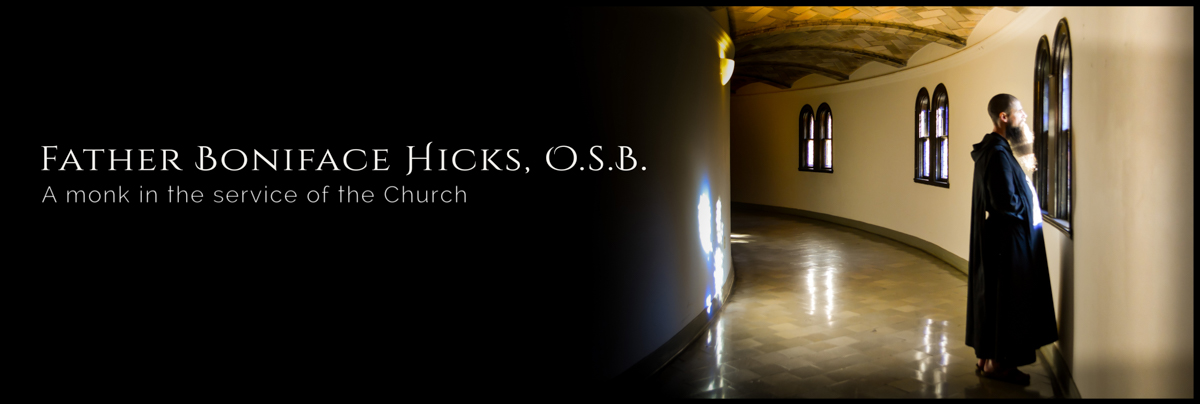“When you fast, do not look gloomy like the hypocrites.” These are among the words of Matthew’s Gospel that welcome us into Lent on Ash Wednesday. We are told to fast and not look gloomy, but why not? After all, don’t we feel gloomy? Hungry, a little weak, maybe a headache coming on and we have a lot of work to do and we are not sure if we are going to hold out the rest of the day without any food. We are not sure if this might be ruining our health and we don’t like it when our stomach is growling. Looking gloomy would seem to be simply honest. What is the point of fasting anyway?
In his 6th century Rule, St. Benedict teaches us that there is a connection between fasting and chastity. In his lengthy 4th chapter on the Tools for Good Works, St. Benedict instructs the monk “to love” only two of the tools: “to love chastity” and “to love fasting.” This follows the already centuries-old tradition of monastic wisdom regarding the interrelation of sense-desires, the desires that St. Thomas calls (and Blessed John Paul II refers to in ToB audience #54) the concupiscible appetites. Based on this connection we can draw some insight on fasting from St. John Paul II’s teaching in the Theology of the Body about chastity.
In Audience #54, St. John Paul II notes that chastity has a negative aspect: to master and overcome the “lustful passions.” This is an exercise of the virtue of temperance and is part of the path to purity. At the same time, St. John Paul II explains the teaching of St. Paul in 1 Thessalonians 4:3-5, noting that, “[t]he task of purity emphasized by the author of the letter is not only (and not so much) abstaining from ‘unchastity’ and from what leads to it, that is, abstaining from ‘lustful passions,’ but, at the same time, keeping one’s body, and indirectly that of the other, in ‘holiness and reverence.'” In short, St. John Paul II couples the negative “abstinence” with the positive “reverence” for the body. He couples the exterior negative self-denial with the interior positive attitude of reverence for the body that leads to purity of heart.
In fasting, also, we have a negative, self-denial of a sense-desire, a concupiscible appetite. At the same time (if we do not want to look gloomy) there must be a positive affirmation, a positive interior movement towards reverence for the body, holiness, and love. The key for this is given in Luke 5:35 where Jesus tells us, “The days will come, when the bridegroom is taken away from them, and then they will fast in those days.” Jesus connects the practice of fasting with love for the bridegroom. The desire for food becomes a desire for union with Christ–an attitude the Church has maintained from the earliest days. Indeed, the only current daily fast in the Roman Catholic Church is the fast before Holy Communion. We learn to relate the hunger pangs of empty stomachs with a preparation for Communion with Jesus Christ, the Divine Bridegroom. Fasting, like chastity, becomes a reverence for the Body. In short, given the motivation Jesus provides, in which fasting (like chastity) is an expression of longing and a preparation of the body for the Body of the Bridegroom, we might even say, “fasting is romantic.” In this light, we can better see how St. Benedict can encourage his monks “to love fasting” (and “to love chastity”) and we can see how Jesus can tell us not to look gloomy. Our growling stomachs are calling to us, “The Bridegroom is near! Let us go out to meet Him!”
This article was originally written for the Theology of the Body Institute e-newsletter.
Here is a homily I preached for the Franciscan TOR Sisters that expands on this topic:

